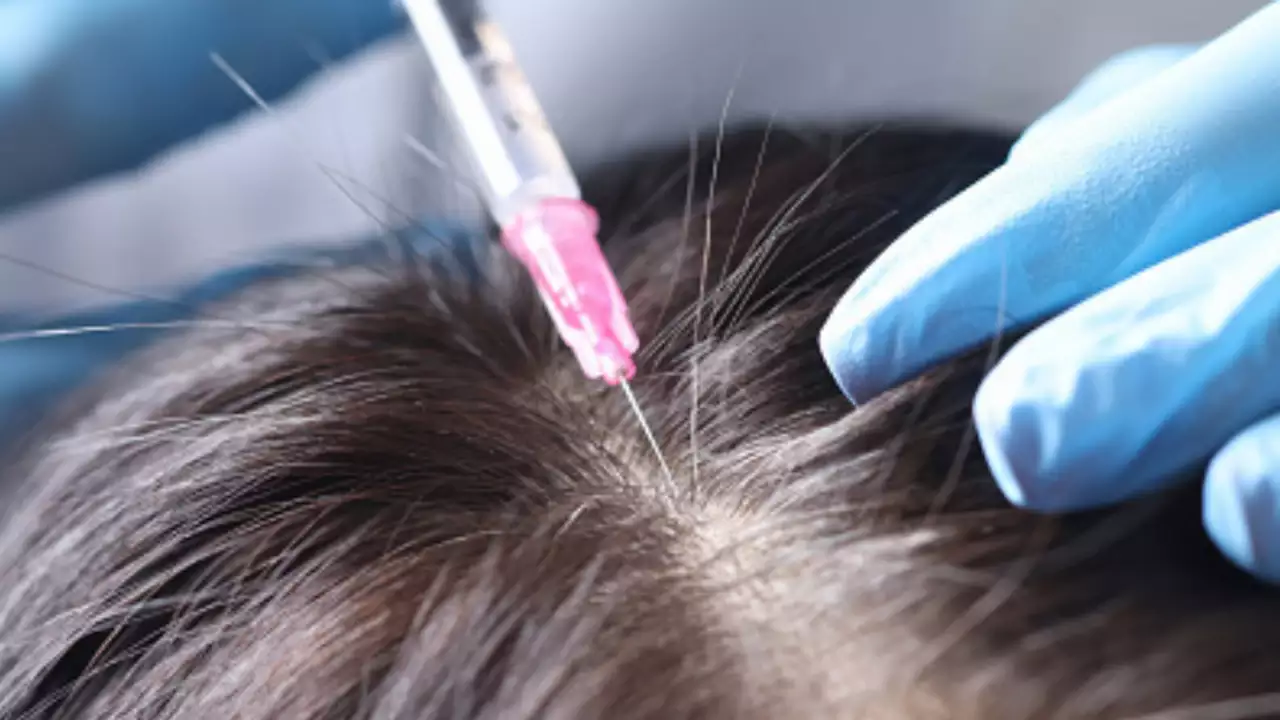Decoding Hair Transplant Surgery in Bangalore: What to Expect
Hair transplant surgery has emerged as a transformative solution for individuals grappling with hair loss. In this comprehensive blog, we deliver the intricacies of the hair transplant procedure and provide a roadmap for people who are considering this life-changing option.
Introduction to Hair Transplant Surgery
Hair transplant surgery is an intricate procedure that involves extracting and transplanting hair follicles to thinning and balding areas, restoring the natural hair growth. As the advancements in medical science have progressed, so has the evolution of hair transplant techniques. The options have diversified from traditional Follicular Unit Transplantation (FUT) to the more contemporary Follicular Unit Extraction (FUE), providing tailored approaches to various hair restoration needs. According to different causes of hair loss, different transplant methods are available. critical factors influencing candidacy are fundamental aspects that individuals considering this procedure should explore. In this comprehensive exploration of hair transplant surgery, we deliver the intricacies of the process, its various techniques, and what individuals can expect on their journey to revitalizing their looks.
Understanding Hair Loss Causes
Hair loss is a prevalent concern affecting individuals of all ages and genders. Various factors contribute to this phenomenon, making it crucial to understand the underlying causes. Androgenetic alopecia, commonly known as male or female pattern baldness, is a hereditary condition that plays a significant role. Hormonal changes, often associated with pregnancy, childbirth, or menopause, can also lead to temporary or permanent hair loss. Certain medical conditions, such as thyroid disorders, and the side effects of medications may contribute to hair thinning. Recognizing these diverse triggers is essential for determining suitable interventions and tailoring effective hair loss treatments.
Different Hair Transplant Techniques
Hair transplant surgery has various techniques to address different types of hair loss. Two primary methods are Follicular Unit Transplantation (FUT) and Follicular Unit Extraction (FUE). FUT involves removing a strip of scalp from the donor area and extracting follicular units for transplantation. On the other hand, FUE involves harvesting individual follicular units directly from the donor site, resulting in minimal scarring. Each technique has advantages and considerations, and the choice depends on factors such as the patient’s preferences, hair loss, and the surgeon’s expertise. Understanding these different approaches allows individuals to make informed decisions based on their needs and desired outcomes.
Choosing the Right Candidate for Hair Transplant
Selecting the right candidate for hair transplant surgery is crucial in ensuring successful and satisfactory results. Candidates should have realistic expectations about the outcome and understand that hair transplantation is a permanent solution. Factors influencing candidacy include:
- The extent of hair loss.
- The availability of donor hair.
- The individual’s overall health.
A comprehensive consultation with a qualified hair transplant specialist is essential to assess these factors. The specialist evaluates the donor area’s density, hair texture, and scalp laxity to determine the procedure’s feasibility. Additionally, discussing medical history, lifestyle, and expectations helps tailor the treatment plan to the candidate’s needs, ensuring a positive and lasting outcome.
Preparation for Hair Transplant Surgery
Adequate preparation for hair transplant surgery is vital to ensure a smooth and successful procedure. Patients need to follow specific guidelines provided by their hair transplant specialist to optimize the results and minimize the potential risks. Before the surgery, individuals may be advised to refrain from smoking and avoid certain medications that could interfere with the procedure or increase the risk of bleeding. The specialist might recommend using specific hair care products and advise against haircuts close to the surgery date to ensure an adequate donor area. It’s crucial to stay well-hydrated, get sufficient rest, and maintain a healthy diet in the days leading up to the surgery. Following the pre-operative instructions diligently contributes to a positive surgical experience and enhances the hair transplant results.
The Hair Transplant Procedure
The hair transplant procedure is a meticulous and well-coordinated process that involves several key steps. First, local anesthesia ensures the patient’s comfort throughout the surgery. The surgeon then carefully extracts hair follicles from the donor area, typically at the scalp’s back or sides. Two primary techniques for extraction are Follicular Unit Transplantation (FUT) and Follicular Unit Extraction (FUE). In FUT, a strip of scalp is removed, and follicles are dissected under a microscope. FUE involves individual follicle extraction using a specialized punch tool. Once the follicles are harvested, tiny incisions are made in the recipient area where hair loss is evident. The surgeon delicately implants the extracted follicles into these incisions, ensuring a natural and aesthetically pleasing hairline. Precision, artistry, and attention to detail are paramount during the hair transplant procedure. The duration of the surgery depends on factors such as the number of grafts being transplanted. Patients receive post-operative care instructions to promote healing and optimize results afterwards. Following these guidelines is essential for a successful and satisfying outcome.
Post-Transplant Care and Recovery
After undergoing a hair transplant procedure, meticulous post-transplant care and a smooth recovery process are essential for optimal results. Patients should adhere to specific guidelines provided by their surgeons, including gentle scalp washing and avoiding activities that may strain the transplanted area. It’s common to experience temporary redness, swelling, and scabbing, which typically subside in the days and weeks post-surgery. Regular follow-up appointments with the surgeon help monitor progress, address concerns, and ensure proper care for the newly transplanted hair, contributing to a successful and satisfying outcome.
Expected Results and Timeline
Expecting visible results from a hair transplant involves understanding the timeline of the process. Initially, patients may experience shedding of transplanted hairs, a normal part of the graft’s growth cycle. Substantial growth usually begins around three to four months post-surgery, with more noticeable results emerging in six to nine months. Full results may take up to a year, allowing the transplanted hair to blend seamlessly with existing strands. Patience during this timeline is crucial, as the gradual transformation ensures a natural and aesthetically pleasing outcome.
Choosing a Hair Transplant Clinic
When choosing a hair transplant clinic, several crucial factors should be considered to ensure a positive and successful experience. First and foremost, the qualifications and experience of the medical professionals, mainly the surgeons, play a pivotal role. Checking reviews, testimonials, and before-and-after portfolios can provide insights into the clinic’s track record. Certification and accreditation of the clinic and adherence to safety protocols are paramount for patient well-being. The clinic’s facilities, technology, and services should also align with the patient’s expectations. A thorough consideration of these factors helps individuals make informed decisions and choose a reputable clinic for their hair transplant journey.
Services Provided at Cutis Hospital, Bangalore
Cutis Hospital in Bangalore offers comprehensive services for hair transplant surgery, providing patients with a blend of expertise and advanced technology. The hospital has state-of-the-art facilities to ensure precision in the transplantation process. Qualified and experienced medical professionals at Cutis Hospital guide patients through every step, from initial consultations to post-operative care. The commitment to excellence in hair restoration is reflected in personalized care, making Cutis Hospital a trusted destination for individuals seeking effective and reliable hair transplant services in Bangalore.
Conclusion
In conclusion, embarking on a hair transplant journey is a transformative experience beyond restoring hair—it’s about restoring confidence, self-esteem, and a positive self-image. From understanding the causes of hair loss to selecting the right clinic, undergoing the procedure, and embracing the recovery process, each step is a testament to the commitment to one’s well-being. As the journey concludes, individuals can anticipate not just the regrowth of hair but a renewed sense of self-assurance. Choosing a reputable clinic, following post-operative care diligently, and managing expectations contribute to the overall success of the hair transplant endeavor. With the support of qualified professionals and a commitment to self-care, individuals can enjoy the fruits of their journey, embracing new look and newfound confidence.
FAQs About Hair Transplant Surgery
1. Is the hair transplant procedure painful?
While patients may experience some discomfort during and after the procedure, local anesthesia is administered to minimize pain. Most individuals find the process tolerable, and any postoperative discomfort is manageable with prescribed medications.
2. How long does it take for transplanted hair to grow?
Hair transplant results vary, but initial growth typically begins within a few months. Significant improvements are often noticeable around six to nine months post-surgery, with full results visible after a year.
3. Are there any risks associated with hair transplant surgery?
Like any surgical procedure, hair transplant surgery comes with potential risks, such as infection or scarring. However, with a qualified and experienced surgeon, these risks are minimized. Following post-operative care instructions is crucial to mitigate any complications.
4. Can women undergo hair transplant surgery?
Yes, women can undergo hair transplant surgery. The procedure’s suitability depends on the underlying cause of hair loss and individual factors. Consultation with a hair transplant specialist can determine the feasibility and expected outcomes for women.
5. How much does a hair transplant cost in Bangalore?
The hair transplant cost in Bangalore can vary based on the clinic, the surgeon’s expertise, and the chosen technique (FUT or FUE). Prices can range from INR 40,000 to INR 2,00,000 or more.




